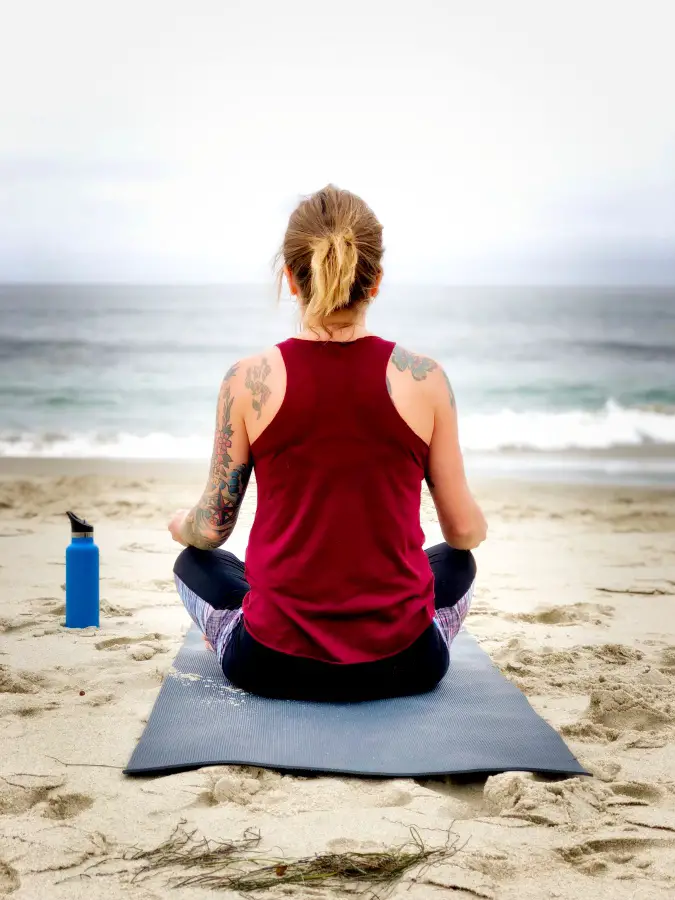Postpartum Exercises you can do at Home

Getting exercise postpartum can be challenging between the fatigue, the pain, and just not being ready to hit the gym. Luckily there are many exercises you can begin doing at home on your own time. Finding a balance between recovery and exercise can feel impossible, but starting slow and gentle exercises in short bursts of activity are the best way.
Working on your abdomen
You may have noticed after having your baby that your abdominal area is different than it was prior to pregnancy. Loose skin, separated abdominal muscles, and other changes can make you feel like your body isn’t your own. These issues will clear up with time, but it’s important that when you’re exercising you are mindful of what you need to do to prevent injury and help your body heal.
Sit-ups are a no-go until your abdominal muscles have healed, but you can do pelvic tilts to help strengthen your abs and prepare your body for getting back into your previous routine of crunch time. It may feel tempting to commit to 100 crunches every morning to bootstrap your way back to svelte abs, but it’s actually counterproductive. Your abdominal muscles have been through a lot in the past year and may have even suffered separation. Doing crunches or sit-ups won’t just slow your recovery it can actually make things worse.
To do a pelvic tilt you’ll want to lay flat on the floor in comfortable clothes, with your knees bent and your shoulders and hips in a comfortable position. Remember your joints in your hips and lower back may still be a bit loose and wobbly from carrying your baby so be fluid and slow with your movements.
While laying on your back, inhale and feel your tummy expand, lift your tailbone up while keeping your hips on the ground, and exhale with this movement. When you get to the top of the movement, flex the muscles in your bum, then slowly tilt back to the beginning position. Doing this 8-10 times is enough to start on a path of awesomeness. While this may not feel like you’re doing much, it’s an excellent way to prepare your core for more exercise later as you’re further along in your healing. If 8-10 repetitions are too much for you at the beginning, feel free to whittle that down until you’re comfortable. You’re not going to build Rome in one day.
Strengthening your arms
Your arms are getting a workout daily now between holding and carrying your baby around to struggling to find a comfortable position for the diaper bag, baby carrier, and whatever else you need to lug around. While you are building tolerance every time you do these things a little extra help can be found in push-ups and curls.
 To be as effective as possible without needlessly stressing your body with postpartum push-ups, start out on a flat floor on your hands and knees. Make sure that your knees are in line with your hips and that your lower legs are on the floor. Because your hips and knees may still be a bit loose from pregnancy, this position can help you feel more secure and does not put extra stress on those joints as they are recovering. Once you’re in this position bend your elbows so that you are coming closer to the floor and then using your arms push yourself back up. You don’t need to go all the way to the floor for this exercise to help build up your arms. Most people do 3 sets of 10 when they are in the habit, but start out with fewer repetitions at first and pay attention to how your body feels. The old adage of “no pain, no gain” is not going to serve you here. If something hurts stop, if you get achy after exercise rethinks your plan. Your body is recovering, it’s not a good time to ignore signals of damage.
To be as effective as possible without needlessly stressing your body with postpartum push-ups, start out on a flat floor on your hands and knees. Make sure that your knees are in line with your hips and that your lower legs are on the floor. Because your hips and knees may still be a bit loose from pregnancy, this position can help you feel more secure and does not put extra stress on those joints as they are recovering. Once you’re in this position bend your elbows so that you are coming closer to the floor and then using your arms push yourself back up. You don’t need to go all the way to the floor for this exercise to help build up your arms. Most people do 3 sets of 10 when they are in the habit, but start out with fewer repetitions at first and pay attention to how your body feels. The old adage of “no pain, no gain” is not going to serve you here. If something hurts stop, if you get achy after exercise rethinks your plan. Your body is recovering, it’s not a good time to ignore signals of damage.
Using weights to build strength and tolerance in your arms is a great way to exercise, you can do this sitting in a chair and with using things you have around the house if you don’t have hand weights. Follow your doctor’s advice regarding how much to lift, and don’t overdo it. Using 2 full water bottles as weights can be just enough weight to start with without going overboard. Sit in a chair with your feet flat on the floor, keep your back in a comfortable position but use good posture, don’t slouch. With a water bottle in your hand let your arm extends to your side, and then slowly and carefully pull the water bottle up towards your shoulder, this should flex your bicep or the muscle that is on the front of your arm above your elbow, hold for 2 seconds and then slowly return your arm to the relaxed position. Do 3 sets of 5 with each arm each day. When this becomes too easy, find a slightly heavier weight, filling a water bottle with sand can be a cheap way to step up your exercise plan.
The secret exercise
Women in general whether they had a vaginal birth or not, whether they had an episiotomy or not can benefit from strengthening their pelvic floor. You may have already started doing Kegel exercises while you were pregnant but it’s important to continue them as they can guard against postpartum incontinence.
To do a kegel, lay on your back in the floor with your knees bent. Tighten the muscles in your vagina as if you’re trying to stop the flow of urine. Hold this for 10 seconds and release. Make sure you’re not tightening your abdomen or your legs when you do this, so you can focus completely on the right muscles. Doing 3-5 sets of 10 is the goal, but you may start with less and work your way up.
Doing Kegels not only help with healing and strengthening your pelvic floor, but they can make intercourse more enjoyable for women when they are ready to start again.
Whatever you do, know your limits and respect your body’s signals that you are going too fast or pushing too hard. If you start feeling worse than usual, stop and reassess your goals and plans, and do not be afraid to reach out to your doctor for advice if something seems wrong.







